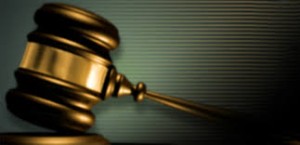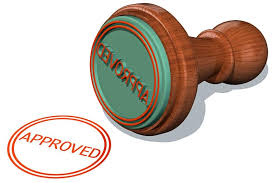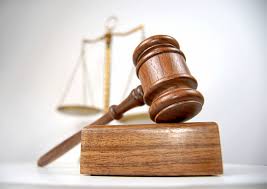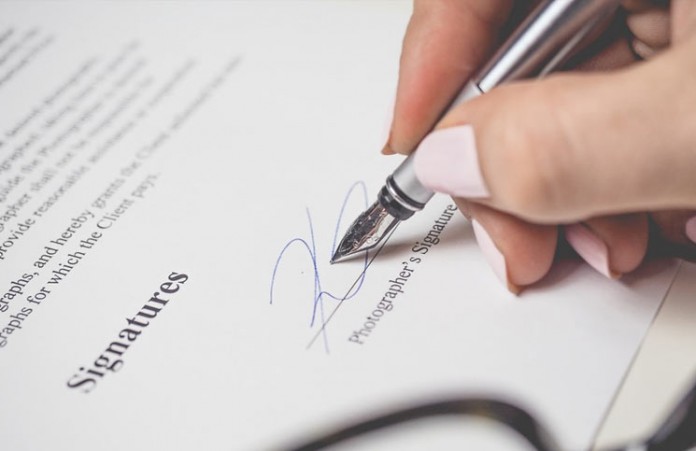In this blog post, Anumeha Saxena, a student, currently pursuing a Diploma in Entrepreneurship Administration and Business Laws from NUJS, Kolkata, discusses the mechanisms for dispute resolution when dealing with disputes concerning the assignment of licenses.
Legislation and enforcement in India are considered inadequate for the protection of intellectual property. This protection is essential if India wishes to be considered a potential market for foreign players. With liberalization, IPR protection has emerged as a key concern for government, resulting in the special attention to provisions especially those relating to licensing. Simply put, a license is an authorization to a third party to use one’s IP in consideration of royalty over sales, without transfer of ownership.[1] Licensee must follow agreement strictly.
An agreement to this effect contains clauses for dispute-resolution. Clauses are provided to let parties act outside of rules of any given court or alternative dispute resolution rules to facilitate simplified service of documentation, according to contractual provisions, aiming to be less expensive and more efficient.[2]
The paper first discusses relevant provisions for licensing regimes for different IPs. Further, provisions in a license are discussed to determine what kinds of disputes might be encountered.
Statutory Mechanisms
As per Trademarks Act, 1999, the license needs to be written while licensee could be registered user[3] Or otherwise,[4] User meets provided all conditions of the agreement. Licensee enjoys same rights as enjoyed by the proprietor. The benefit of the use of even an un-registered user accrues to registered proprietor. However, a registered user can institute infringement proceedings for cancellation,[5] Which is not available to the unregistered permitted user.
Under section 70, Patents Act, a patentee can grant a license. Types of licenses recognized are express, statutory, implied, exclusive and non-exclusive. Right to license is limited by compulsory licensing.[6] It aims to prevent abuse of patent as a monopoly and to enable commercial exploitation of an invention by an interested person.[7]
The owner of copyright in existing or future work,[8] May grant an interest in his right, by license in writing, signed by him or authorized agent. Unlike other forms of IP, owner of copyright also has moral rights, apart from economic. Copyrighted work must be identified, and license should also specify rights.
If the licensee does not exercise licensed rights within the period of a year, license in respect of these rights is deemed to have lapsed unless specified otherwise.[9]
Copyright Board may grant compulsory licenses[10] On stipulated terms in respect of any work, including unpublished ones.[11] A new section 31C introduced in 2012 provides statutory licenses to any person desiring to make a cover version of a sound recording in respect of any literary, dramatic or musical work.[12] Novel section 31D introducing statutory licensing for broadcasters was introduced to facilitate access to works in the industry, depended till then on voluntary licensing. Any broadcasting organization desiring to broadcast work may do so by prior notice to right-holders and pay royalty as fixed by Board in advance.[13] Section 31B provides for a compulsory license in works for the benefit of disabled. Board, on the application for such a license, by any person working for profit basis or business, is to dispose of such application within two months of receipt.[14] Thus, Copyright Board constitutes a mechanism for dispute resolution as specified above.
Licenses for open source software will not be considered in the paper. However, after 2012, Act provides that alteration of rights management information without authority or distribution of software with knowledge of same punishable with imprisonment for 2 years and fine.[15]
Licensee might be responsible for the infringement of copyright, remedied by court orders, marking another mechanism for resolution. Mechanisms could be remedial measures immediately issued by courts, on preliminary findings. These can be sought from private entities.[16]
If the infringer can establish no reasonable grounds of knowing that work was copyrighted, the injunction is the only remedy that can be obtained against him, and infringer will not be liable to pay damages or account of profits.
Permanent injunctions granted at the end of proceedings are another remedy as well as those against unidentified infringers.[17] The remedy to prevent the destruction of infringing evidence by the infringer is Anton Piller order, in copyright and trademark cases. It authorizes the owner, accompanied by court-appointed officers to enter infringer’s premises; post-inspection of relevant documents/ articles, he may take and remove them for safe custody.
On import of infringing copies, the proprietor can approach Registrar of Copyrights to prohibit import after inquiry, and may inspect and confiscate and further prohibit.[18] Additionally, as per Intellectual Property Rights (Imported Goods) Enforcement Rules, 2007, a person owning IP rights can notify Customs Commissioner, having jurisdiction, to prohibit the import of such goods.[19] These two are another mechanism for dispute resolution.
After assignment of license, if the licensee is found infringing, criminal remedies may be initiated though uncommon.[20]
On trademarks, Registrar may cancel, modify or permit alteration on the application of trademark owner, aggrieved person or suo motu, which will affect licensee who is a registered user. If a trademark owner applies to Registrar for modification of trademark, the licensee is not required to be made a party to proceedings, putting his interest at risk. On suspected infringement, a cease-and-desist notice may be issued. Claim for civil remedies could provide relief in the form of an injunction, and damages or account of profits from the infringing party, alternatively. Criminal prosecution can be initiated simultaneously.[21] These constitute mechanisms too.
Contractual Mechanisms
Licenses, predominantly, impose specific restrictions on use of material; in particular, licensee is prohibited from modifying, copying, distributing, transmitting, displaying, performing, reproducing, publishing, licensing, creating derivative works from, sublicensing from, transferring, assigning, renting, selling or otherwise conveying licensed material without written consent from the Licensor.[22] Revision of material rests with the licensor. Licensor warrants ownership of material[23] And further indemnifies the licensee against costs, damages, etc. that licensee might sustain. Limitation of warranty with respect to damages[24] Or content[25] Or the quality thereof[26] exist. Such agreements, of necessity, provide for geographical scope and term.
Licenses provide for terms regarding royalty, revision, and termination. The amount of royalty payable, if any to the author or his legal heirs, is often mentioned. Refuting agency or partnership of another party, and liability due to force majeure[27] are covered. Severability is provided explicitly.[28] Disclosure of quantity of products sold during a period is mandated. This requires maintenance of true and accurate records and regular checks.[29]
 Assignment and transfer of rights of the licensee without written consent of the licensor is prohibited, which is at the absolute discretion of Licensor,[30] though it must not be unreasonably withheld/delayed.[31] This includes transfers arising out of the acquisition, merger, etc. of the licensee with or transfer of assets to another corporation.[32] Further, the agreement is made binding on and inures to any corporation or other legal entity, with which licensor may consolidate or merge. Otherwise, the agreement could also be assigned to any corporation directly or indirectly majority owned or controlled by, or under the same control as licensor.[33]
Assignment and transfer of rights of the licensee without written consent of the licensor is prohibited, which is at the absolute discretion of Licensor,[30] though it must not be unreasonably withheld/delayed.[31] This includes transfers arising out of the acquisition, merger, etc. of the licensee with or transfer of assets to another corporation.[32] Further, the agreement is made binding on and inures to any corporation or other legal entity, with which licensor may consolidate or merge. Otherwise, the agreement could also be assigned to any corporation directly or indirectly majority owned or controlled by, or under the same control as licensor.[33]
Especially in patents, if the licensee is defaulting party, it is required to send licensor a certificate signed by duly authorized an officer of the licensee stating that it no longer has any right to use rights above and to make, use, sell or import licensed products.
Especially in trademarks, licensees are expected to ensure quality standard and maintenance, agreeing to comply with all reasonable policies and procedure specifications established by the Licensor; licensees agree not to tarnish mark’s reputation.[34] Failure might amount to a material breach.[35] Licensees are expected to report the infringement to the licensor and assist in consequent proceedings undertaken.[36]
Some mechanism for resolution are in the agreement itself, like expiration on failure to comply with a specified time limit,[37] Preceded[38] By notice[39] Or without.[40] Corrective action to cure the default before stipulated period may prevent termination.[41]
Owing to the philosophy that contract must not be terminated unless inevitable, dispute resolution clauses expect parties to exercise best efforts to resolve as soon as possible, with parties continuing to perform respective obligations not affected by the dispute. If not possible, parties undertake mediation after notice[42]
 Including a description of issues and proposed a resolution. Designated representatives then begin the process of resolution after stipulated period elapses. Occasionally, on failure, parties meet at a mutually desirable location and time, proposing respective proposals to responsible executives, who act in good faith to resolve the dispute. This, on failure, is passed to arbitration, in accordance with the laws governing the arbitration by the mutually acceptable arbitrator. The location that is centrally located is chosen as the venue. While arbitrator refrains from altering provisions of the agreement, they may issue mandatory and restraining orders; in any case, the award renders by an arbitrator is final and binding on the parties, and judgment may be entered thereon in a court having jurisdiction. The primary requirement is the enforceability of the agreement to arbitrate under arbitration law. The agreement may specify laws under which interpretation must take place.[43]
Including a description of issues and proposed a resolution. Designated representatives then begin the process of resolution after stipulated period elapses. Occasionally, on failure, parties meet at a mutually desirable location and time, proposing respective proposals to responsible executives, who act in good faith to resolve the dispute. This, on failure, is passed to arbitration, in accordance with the laws governing the arbitration by the mutually acceptable arbitrator. The location that is centrally located is chosen as the venue. While arbitrator refrains from altering provisions of the agreement, they may issue mandatory and restraining orders; in any case, the award renders by an arbitrator is final and binding on the parties, and judgment may be entered thereon in a court having jurisdiction. The primary requirement is the enforceability of the agreement to arbitrate under arbitration law. The agreement may specify laws under which interpretation must take place.[43]
Mostly, agreement prescribes that it supersedes prior agreements and sets forth the entire understanding of parties. It requires parties to consent to personal jurisdiction of courts, which are often those located physically in a particular state of a country. Right of prevailing party to recover its attorney’s fees incurred in litigation is also crystallized.[44]
The facilitating process, documents, material and information in possession of each party relevant to the dispute are made available to other, after service of the notice.
References:
[1] Transfer of ownership happens in cases of assignment of IP rights. Licensing itself may be exclusive or non-exclusive. In the former, despite retaining proprietorship, owner of the IP does not retain any other right, to be further licensed to other users.
[2] This is explained in <http://www.wipo.int/export/sites/www/sme/en/documents/pdf/ip_panorama_12_learning_points.pdf>.
[3] For registration as a user, licensee and owner are required to jointly file a form with a stamped copy of the agreement and affidavit as per the Rules. These contain specifics of the relationship between the parties, geographic and time scope and payable royalty.
[4] The procedure for registration has been laid down in sections 48-54 of the Trademark Act, 1999.
[5] Section 50, Trademark Act, 1999, permits cancellation of registration on the grounds of misuse of licensed mark or misrepresentation or non-disclosure by the proprietor.
[6] Factors, including, nature of invention, time elapsed since grant of patent, measures already taken by patentee or licensee to make full use of the invention, ability of applicant to work the invention to public advantage, capacity of applicant to undertake the risk in providing capital and working the invention if the application were granted are accounted for, by the Controller, while deciding an application filed under section 84, to grant a compulsory license.
[7] Any person can make an application for grant of a compulsory licence of a patent after three years, from date of grant of the patent, on any of these grounds: when reasonable requirements of public with respect to patented invention have not been satisfied, or the invention is not available to public at a reasonably affordable price or if it has not worked in the territory of India.
[8] The license takes effect only when work comes into existence.
[9] Period of license is deemed to be five years from the date of license and it is presumed to exist within boundaries of India unless geographic limits are specified.
[10] Conditions for grant, to two or more persons, are: work must have been published or performed in public, and the author must have refused to republish or allow communication to public by broadcast, of such work or in case of a sound recording the work recorded in such sound recording, on terms which any person in opinion of Board is qualified to do, considers reasonable. Before the amendment to Copyright Act in 2012, this was limited to complainants.
[11] Section 31, the Copyright Act, 1957. In case of an unpublished work, where author is dead, unknown or cannot be traced, or any work published or communicated to public where work is withheld from public in India, under such circumstances, any person may apply to the Board for a licence to publish the work or translation thereof in any language according to procedure in the Act. Before the amendment to Copyright Act in 2012, the provision extended to Indian works alone.
[12] The person making the sound recording is required to give notice to owner prior notice of his intention in a prescribed manner, provide copies of all covers or labels with which the version would be sold and pay in advance royalty rate fixed by the Board. Recordings may be made only after expiration of five years after the publication of original sound recording; further, minimum royalty for 50,000 copies of the work during each calendar year has to be paid. This is a replacement of section 52(1) (j) after the amendment.
[13] Necessarily, names of authors and principal performers shall be announced during a broadcast, and organization shall maintain records of broadcast, books of account and render same to the owner.
[14] It must state means and format of publication, a period of exercise of license and number of copies to be issued including the rate or royalty.
[15] Rights management information includes, inter alia, details of author and terms & conditions governing the use of rights.
[16]For instance, an intermediary hosting infringing content on its website. Such an intermediary is required to remove the content, within 36 hours of receipt of the request, provided the intermediary operates in India.
[17] Interim directions that restrain unidentified infringers, hard to identify or locate, without providing them an opportunity of being heard for timely remedy are an important mechanism.
[18] Section 53, Copyright Act, 1957.
[19] This remedy would not extend when the goods sent are non-commercial in nature and meant for personal use of importer. In such cases, making an application to Registrar of Copyright is more feasible
[20] Knowingly infringing and encouraging is punishable with imprisonment of at least 6 months and a maximum of 3 years, with fines between 50 thousand and 2 lakhs. This begins with the filing of a FIR for this non-bailable offense. Infringing copies can be seized without prior authorization, by police officers.
[21] This can be done for making or applying an identical or similar trademark without the consent of the proprietor, punishable with imprisonment between 6 months to 3 years and fine of up to two lakh rupees.
[22] Quite obviously licensee is not to use licensed material for any purpose that is unlawful or prohibited by the Terms of Use in the license.
[23] Standard warranties include a warranty as to the content not being scandalous, libelous or unlawful.
[24] Parties are not held responsible for any indirect, special, incidental, punitive or consequential damages, inter alia, loss of data, business interruption or loss of profits arising out of the use or due to inability to use licensed material.
[25] Error and omissions are included in this, but it also extends to libel, infringement of rights of publicity, privacy, trademark rights, moral rights or disclosure of confidential information.
[26] This often refers to performance, merchantability and fitness for a particular purpose
[27] However, parties are expected to inform the other party about the occurrence of such an event and cure non-performance as soon as reasonable. This is seen at http://www.gemalto.com/companyinfo-site/about-site/merger-site/download-site/Documents/patent_licence.pdf.
[28] Id. If any term is held invalid, the remainder of provisions shall continue to be in force, and enforced as if the impugned portion stands eliminated.
[29]Id. Late payment charges are found too.
[30] This is seen at https://www.sec.gov/Archives/edgar/data/1383414/000119312507075646/dex99k3.htm.
[31] This is seen at http://laalmanac.com/_main/commercial.htm.
[32] Supra note 27.
[33] Supra note 27.
[34] This is seen at http://www.xbrl.org/Legal2/XBRL-Revised_Trademark_License_2007-02-20.pdf.
[35] Id. Licensee might have to provide to Licensor samples of marketing collateral CHECK distributed by the licensee along with the declaration of its conformity with standard industry norms, offering the licensor a chance to raise objections.
[36] This is seen at http://www.oshwa.org/wp-content/uploads/2012/08/233124698_1.pdf.
[37] Disposal of in-stock content after verification by licensor may be present after termination of the agreement.
[38] These agreements often specify the applicable law of arbitration as well. A sample of such a clause is available at <http://www.hirstarts.com/legal/license.pdf>.
[39], Supra notes 34. Insolvency or placement of licensee’s assets in the hands of receivers/trustees could call for termination.
[40] A sample of such clause is seen at https://www.upcounsel.com/trademark-licensing-agreement.
[41] A sample of such a clause is available at <https://www.pandadoc.com/copyright-license-agreement>.
[42]; The agreement could also mandate mediation between disputing parties.
[43] Supra note 27.
[44] A sample of such a clause is seen at http://artlawjournal.com/download-artists-licensing-agreement-free/.
 Serato DJ Crack 2025Serato DJ PRO Crack
Serato DJ Crack 2025Serato DJ PRO Crack









 Allow notifications
Allow notifications



[…] Mechanisms for Dispute Resolution Concerning Assignment of Licenses […]